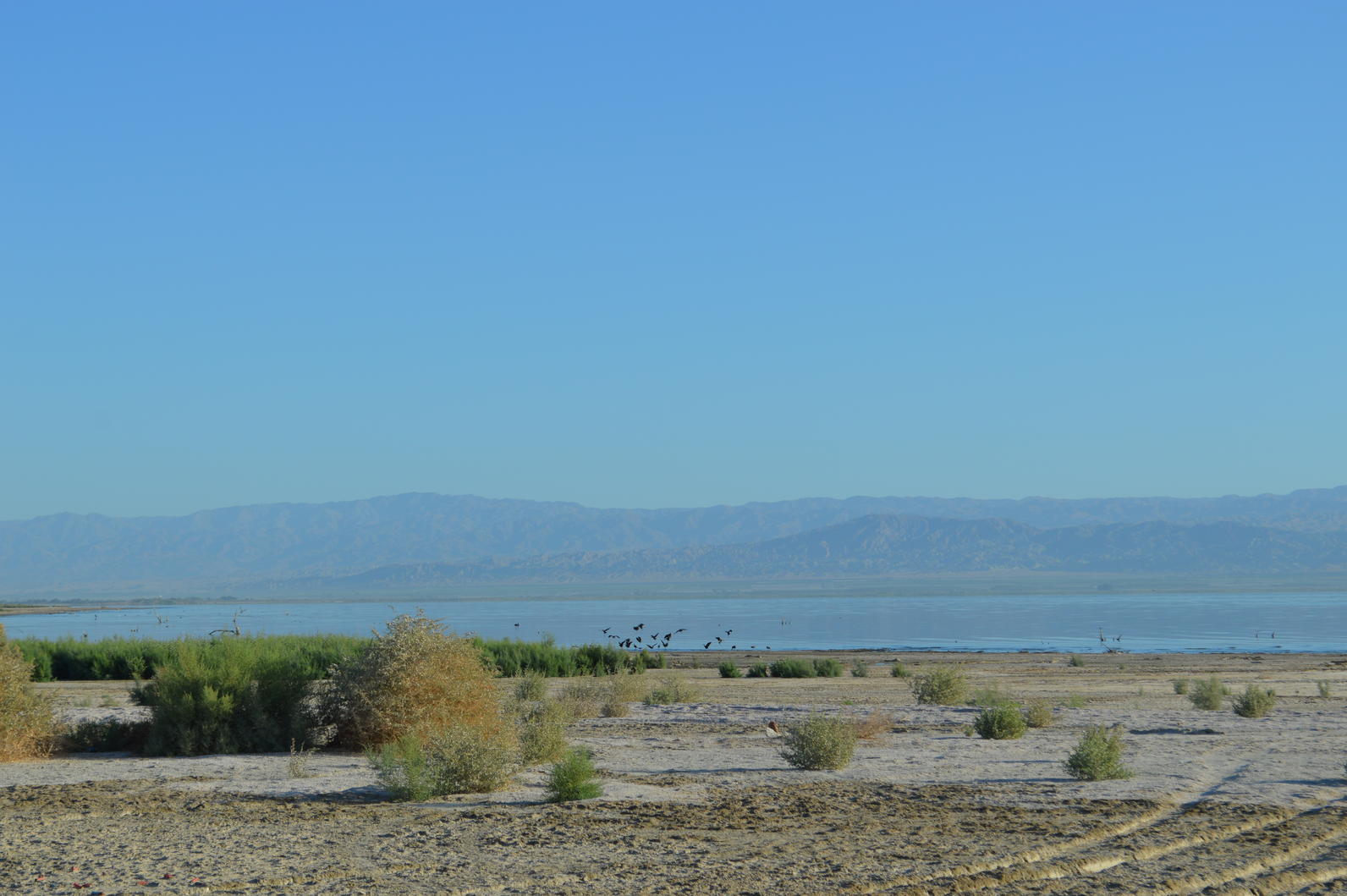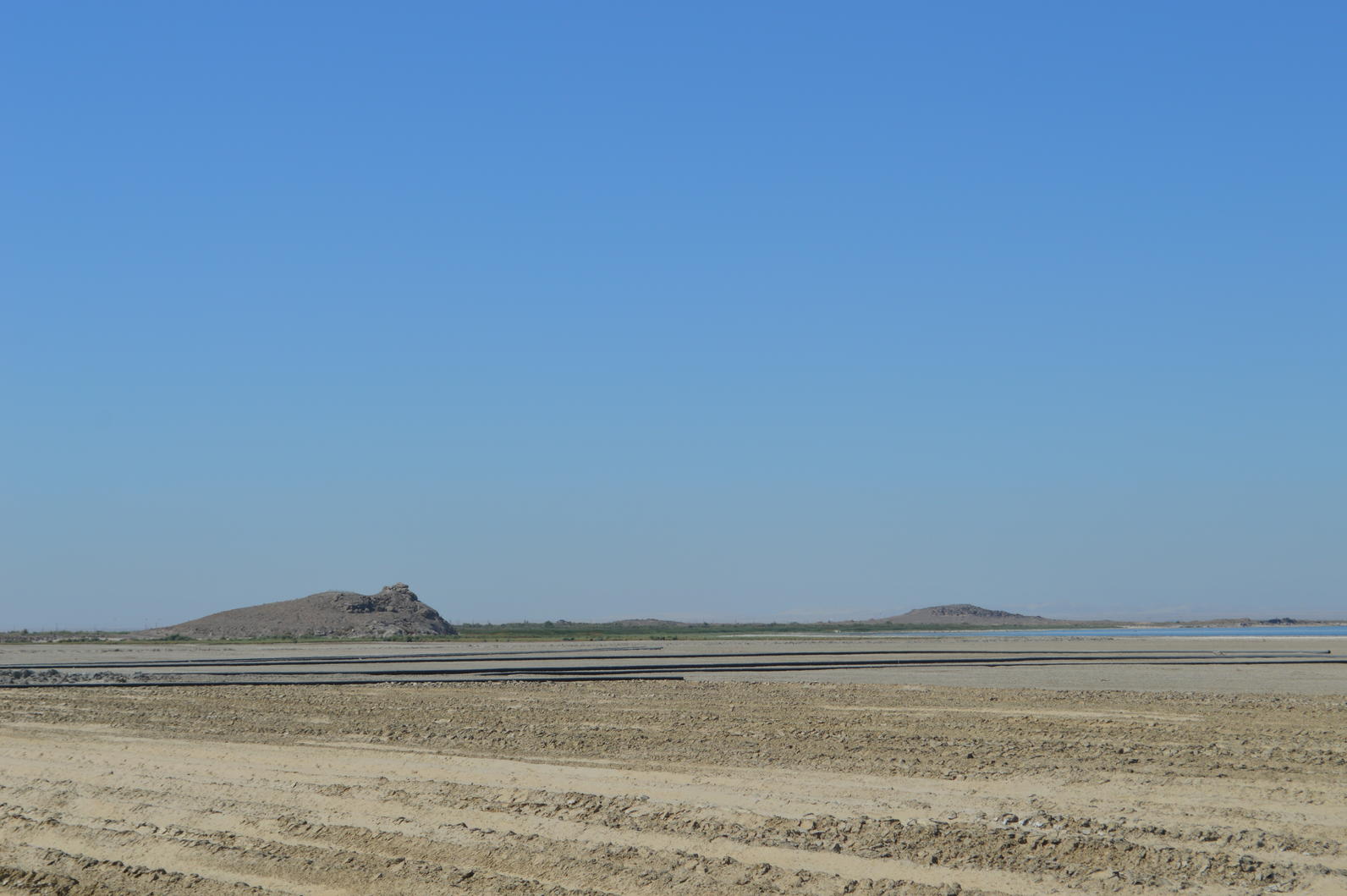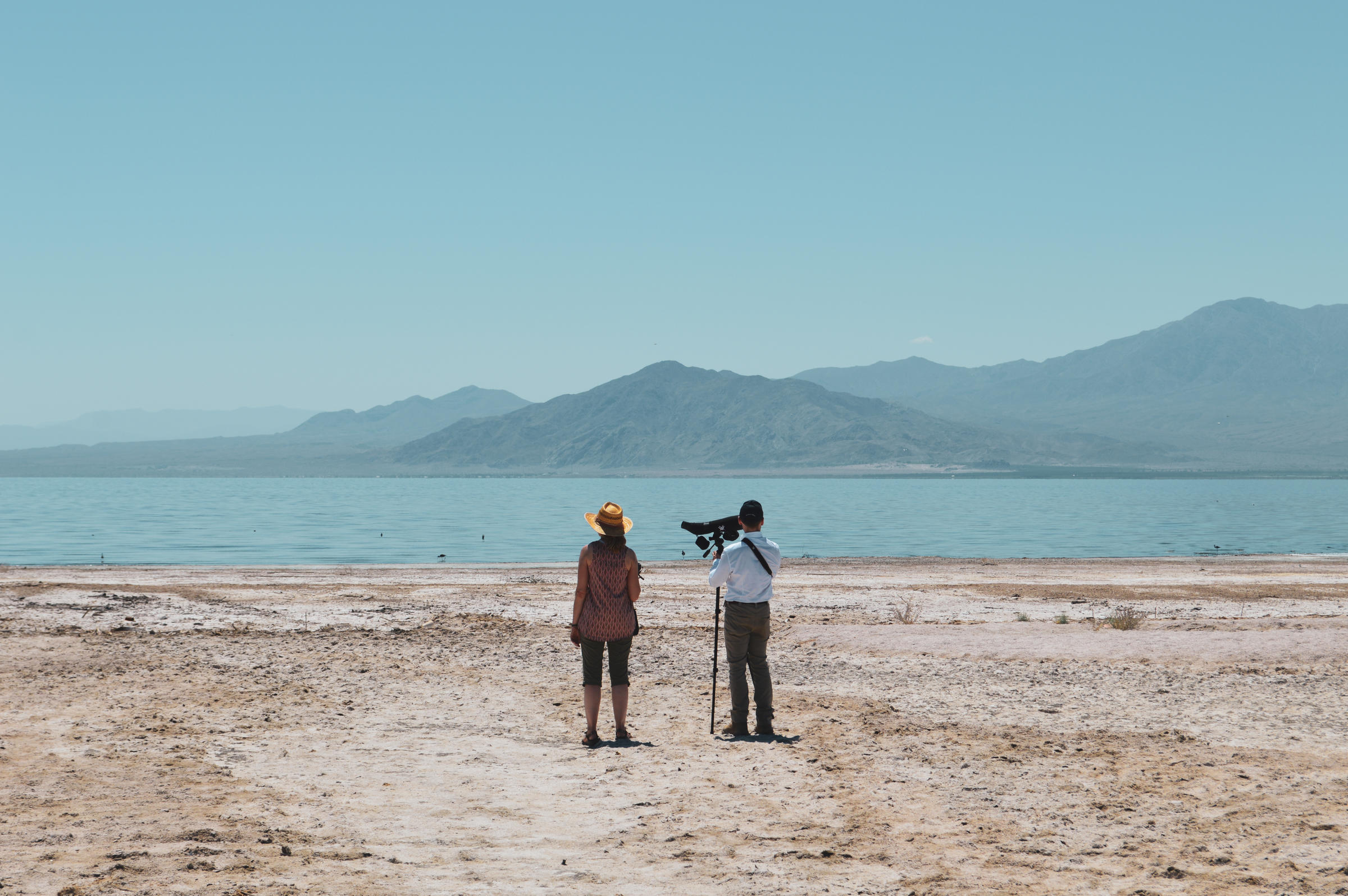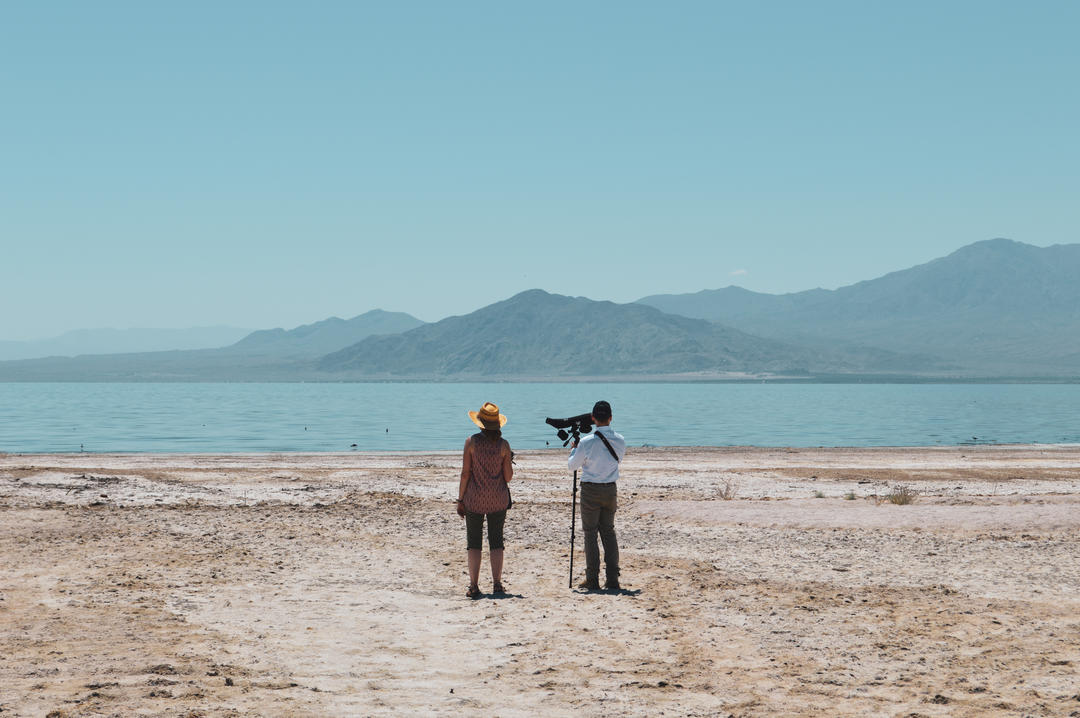The Sea isn’t dead. Yet.
I keep telling myself that. Yet, each time I participate in Audubon’s bird survey at the Salton Sea, the changes are dramatic. The bird numbers appear to continue to decline and the shoreline of the Sea becomes even more unreachable as it shrinks.
While braving a blistering 110 degree day this summer, Audubon's Ryan Llamas and I did see some birds. Migratory birds still know this is a place to stop on their migratory journey to points south for the winter. At our first stop, in the early morning before the temperature gauge hit 90 degrees, I felt a sense of relief as we were treated to a lot different species on the northwest side of the Sea. Mixed flocks of shorebirds, including Black-necked Stilts, Western Sandpipers, Black-bellied Plovers, and Willets proded along the muddy shoreline, picking out invertebrates. A handful of Black Skimmers flew by low along the water hoping to skim the surface for a meal. A couple of Brown Pelicans bobbed on the water surface in the distance. My hopes were high as we left this survey point because we saw over 1,000 birds.

As the day went on, it got hotter, we wilted, and the birds were few and far between. There were a few highlights –we saw a group of perhaps 100 Phalaropes out on the water surface. These unique shorebirds spend a lot of their life on open water rather than on the shore. They spin in the water to stir up invertebrates. I watched and waited. They didn’t spin. Perhaps they stopped in to rest and were headed to a lake with more nutrient rich waters. Along the southwestern shore, we observed a group of several hundred Northern Shovelers – in recent years, we have seen large numbers of these dabbling ducks spending the winter at Salton Sea. I hope they are here to stay for the winter.
My biggest disappointment came at Poe Road – our survey point in the southwest corner of the lake. This has been one of my favorite sites to count birds, usually with an amazing diversity and number during fall migration. The edge of the sea was barely distinguishable in the heat haze. I figured if we could get near the edge we would see the birds I had been waiting for. Despite our spotting scopes, we saw only a fraction of the birds we normally see. The rich edge with its wetlands was dried up and the birds just were not there like they had been. The distance from where the road ends to where the Sea begins had moved dramatically in the past 6 months.

We knew this was coming – the models show how the Sea is receding. It’s just hard to see especially when it is punctuated by a lack of birds. The Sea is not dead yet. There are still some birds – and there must be some fish because there were a handful of pelicans around the Sea (not that I saw them fishing) and in some areas the shoreline is still wet enough to support the invertebrates that shorebirds need to fatten up during their annual migration of thousands of miles. The State of California has the funding, and the plan, to build habitats around the exposed Sea edge to allow these birds to continue to use the Sea as an important wetland resource. We are seeing signs of hope from the State as they are making progress to begin constructing habitat projects on the dry seabed next year
If I write this one year from now, and the State still hasn’t completed, or even started, a restoration project, I am guessing I will have fewer birds to talk about. And it’s not like there are bountiful other wetlands for these birds to choose from – today in California, the options are slim, and for some the Salton Sea is their last stop.








